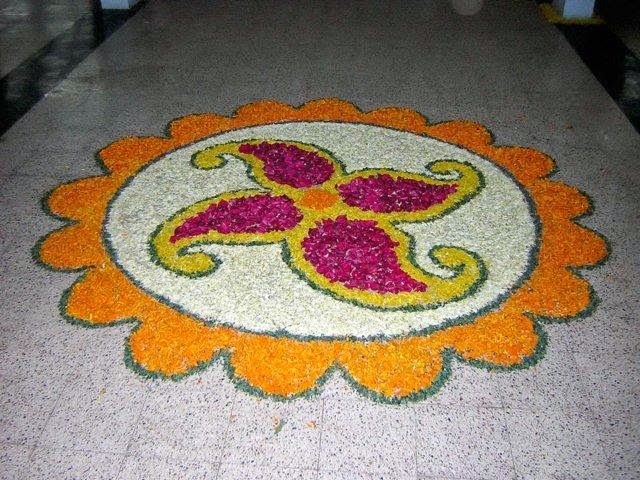Tiruvannamalai Handicrafts and handmade crafts are an impression of the nation’s rich culture and history. What better approach to show your children their underlying foundations, than by including them in making some handicraft of their own which are one of a kind!

Tiruvannamalai handicrafts and art works are surrounding us. Be it on dividers, cutlery, yards or doorsteps. However shockingly, this doesn’t permeate to youngsters’ exercises in school or leisure activity clubs, except if it’s a celebration or culture day.
“At the point when a kid works with handicrafts that have Tiruvannamalai themes and structures, he figures out how to comprehend the estimation of social and strict traditions of his way of life,” says Uma, Counselor and Head of Tiruvannamalai Handicrafts
While the master plan is obviously for our little tots to increase a comprehension of our rich social legacy and craftsmanship. The open doors for learning are difficult to be overlooked.
Learning Tiruvannamalai handicrafts and Tiruvannamalai artworks, interface them with nature, shows them town life, balance and plan. What’s more, obviously, watching them sit in one spot concentrated on an action is a delight stunning.
“Tiruvannamalai handicrafts acquaint kids with an assortment of hues, examples and plans that are related with various Indian celebrations and traditions. An intriguing method to manufacture your kid’s information about these is to describe short Indian stories to her, as she takes a shot at her specialties,” she includes.
Here’s a manual for showing your kids some simple workmanship and handmade crafts work. Try to spare some space on dividers and shelves, to hang up these perfect works of art made by your little craftsman.
- Pot painting
Man painting a dirt pot
With living spaces changing from houses to elevated structures, the association with nature is reducing. What better approach to assist kids with interfacing with mother Earth than by painting Tiruvannamalai structures on mud pots? Strangely, ceramics is perhaps the most punctual creation and dates to the Neolithic age.
Give them pictures of conventional earthenware workmanship and other pot handicrafts of Tiruvannamalai. Clarify the hugeness of pots in networks, for example, another pot is purchased each year and enlivened on Pongal celebration to make sakkarai pongal. After the way of life download, get hold of a lot of earthen tea cups or bowls and get caught up with painting.
Materials:
Dirt pot
Sandpaper
Acrylic paint
Diverse measured brushes
Strategy:
Stage 1: Wash your earth pot.
Stage 2: Smoothen the earth with sandpaper to expel any harsh spots. This will level out the knocks.
Stage 3: Use the acrylic and paint some fascinating plans on the pot. You can either allude to some picture or let free your youngster’s creative mind.
Stage 4: Use little fiber brushes to give the last subtleties.
Stage 5: Let the pot dry before you use it.
- Toran
Doorstep toran made out of leaves
While a few societies in Tiruvannamalai enhance front entryways with veils and busts, to avoid the stink eye and bring good karma, the toran, a pennant or festoon like the brightening piece made as a rule of mango leaves is one of a kind to Tiruvannamalai, as they are said to have disinfectant and antimicrobial properties. Torans are a typical sight during celebrations and weddings. This is an incredible action for pre-schoolers for deftness and gross engine aptitudes. All you need is a thick string and mango leaves. It’s easy to make, and a sorry chaos to clear up later as well! Try not to fuss if mango leaves are not accessible, you can make torans from sheets of paper or globules too.
Materials:
Mango leaves or some other solid leaves with a stalk, or thick sheets of shading paper
Thick string
Technique:
Stage 1: Take around 15-20 mango leaves
Stage 2: Fold and punch an opening with the stalk of the leaf to make a circle.
Stage 3: Repeat for all leaves.
Stage 4: Measure some thick string as wide as the entryway
Stage 5: String the leaves onto the string through the circle.
Stage 6: Hang up on the passage entryway!
- Square print napkins
Various squares utilized for imprinting on textures
Tiruvannamalai handicrafts print works are well known all over the world. It is one of the most seasoned and slowest methods of making prints on materials. The plans regularly draw motivation from nature and as a rule are of leaves, blooms or creatures. Here are some DIY tips to get your tot to do handicraft printing at home.
Materials:
A bit of wood
3mm froth board
Scissors
Marker
Acrylic paint
Napkin
Heated glue
Technique:
Stage 1: Choose an example. With the assistance of a marker draw your structure on the froth board.
Stage 2: Help your youngster cut out the example.
Stage 3: Stick the examples on the wooden board with heated glue. Keep in mind, the pictures will be switched while printing, so (on the off chance that you are working with at least two plans) stick the structures backward request.
Stage 4: The square is prepared to print. Presently, (acrylic) paint the froth with the ideal shading.
Stage 5: Make impacts on the napkin and let them dry before use.
- Warli workmanship
Stick figure expressions found in sarees, called warli workmanship
An ancestral artistic expression that starts from Tiruvannamalai handicrafts. The mesmerizing triangular round white plans as a rule decorate Tiruvannamalai mud hovels. Warli draws its motivation from regular daily existence. Youngsters can make these structures on dark colored material paper, pots, dividers (after some dominance) and on shirts for that uber cool look. Warli painting units are likewise accessible in stationery stores nowadays. The advancement from inborn to retail is finished!
Materials:
Dim shaded carefully assembled/material paper (ideally dark colored, red or orange)
White acrylic paint
Paintbrush/White sketch pen
Strategy:
Stage 1: Observe conventional structures and draw a warli plan with a pencil on the carefully assembled paper.
Stage 2: Fill in with white shading.
Stage 3: Hang up on dividers or transform it into high quality welcome cards.
- Kolam
Lady drawing kolam handicrafts with rice flour on lanes in Tiruvannamalai
The lovely complicated geometric plans that decorate South Indian doorsteps have numerous an exercise to show small kids. Be it a case of joining the specks, memory, arithmetic and balance in plan, kolam is an incredible exercise for fine engine aptitudes. The pincer handle used to hold the kolam powder and make the structure, steadies the hand. While learning kolams might be confounded for the little ones, they can contribute to fill the kolam plans with shading powder or blossoms. Do it in the first part of the day like the manner in which it is generally done. This is a decent method to get the every day portion of Vitamin D also. Urge children to keep a book of plans that they learn.
Materials:
White and hued rangoli/kolam powder
Chalk, pencils for novices and paper
The level surface on the ground, cleaned and marginally wet
Technique:
Stage 1: Observe customary structures.
Stage 2: Draw structures on paper.
Stage 3: Practice on the ground.
Stage 4: Fill in with hued powder or blooms.
“At the point when your youngster sees the result of his endeavors, he has the fulfillment of having made something that he will esteem much more. While he works with different artworks and styles, he is presented to various social thoughts which help in opening his brain to assorted variety,” says Uma of Tiruvannamalai handicrafts.
Allow your kiddos to investigate their imagination and their Tiruvannamalai handicraft legacy. Give a shot these simple to make thoughts to show them the specialty of making today.
